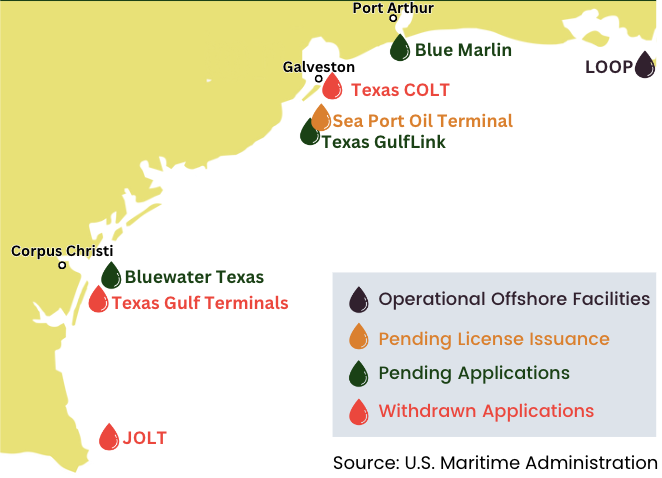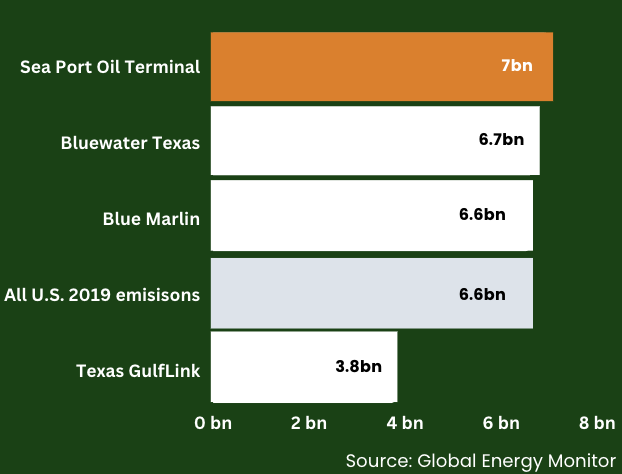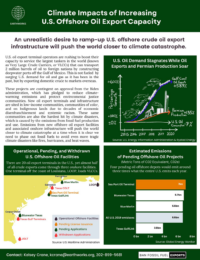An unrealistic desire to ramp-up U.S. offshore crude oil export infrastructure will push the world closer to climate catastrophe.
U.S. oil export terminal operators are rushing to boost their capacity to service the largest tankers in the world (known as Very Large Crude Carriers, or VLCCs) that can transport 2 million barrels of oil to foreign nations by constructing deepwater ports off the Gulf of Mexico. This is not fueled by surging U.S. demand for oil and gas as it has been in the past, but by exporting domestic crude to markets overseas.
These projects are contingent on approval from the Biden administration, which has pledged to reduce climate-warming emissions and protect environmental justice communities. New oil export terminals and infrastructure are sited in low-income communities, communities of color, and on Indigenous lands due to decades of economic disenfranchisement and systemic racism. These same communities are also the hardest hit by climate disasters, which is caused by the emissions from fossil fuel production and use. Emissions from new offshore oil export facilities and associated onshore infrastructure will push the world closer to climate catastrophe at a time when it is clear we need to phase out fossil fuels to avoid even more tragic climate disasters like fires, hurricanes, and heat waves.
U.S. Oil Demand Stagnates While Oil Exports and Permian Production Soar

Operational, Pending, and Withdrawn U.S. Offshore Oil Facilities
There are 20 oil export terminals in the U.S., yet almost half of all crude exports come through three onshore facilities. One terminal off the coast of Louisiana, LOOP, loads VLCCs.

Estimated Emissions of Pending Offshore Oil Projects
Four pending oil offshore depots would emit around three times what the entire U.S. emits each year (in Metric Tons of CO2 Equivalent, CO2e).

For more information please contact: Kelsey Crane, kcrane@earthworks.org, 202-899-5681


